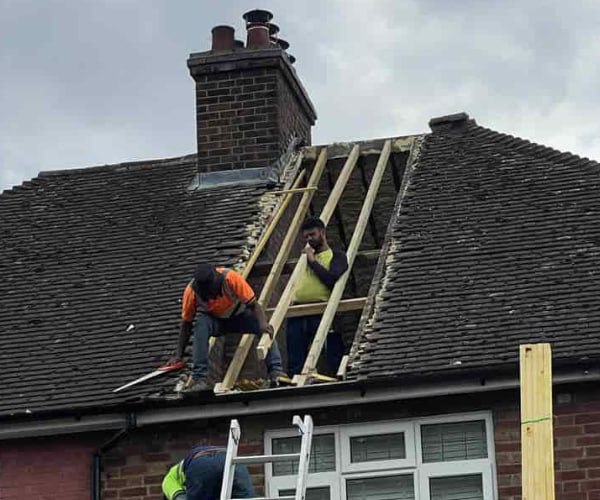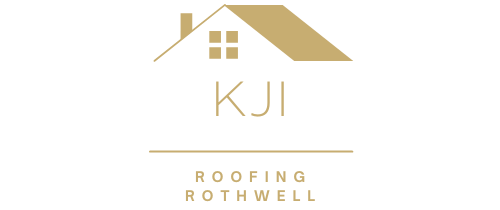What Should I Do Immediately After Discovering a Roof Leak?
Discovering a roof leak can be a stressful experience, especially during heavy rain when water begins to drip inside your home. While it’s tempting to panic or attempt a quick fix, taking the right steps early can make all the difference in preventing further damage. Acting swiftly and strategically will protect both your property and the structural integrity of your roof. For homeowners in Rothwell and surrounding areas, KJI Roofing Rothwell provides professional repair services that address leaks efficiently and effectively, restoring peace of mind.
Step 1: Contain the Water Immediately
The first priority when you notice a roof leak is to control where the water is going. Even a small amount of dripping water can cause damage to flooring, furniture, or electrical components if left unattended.
Here’s what to do first:
- Place containers beneath the leak to catch dripping water. Buckets or large bowls work well.
- Move furniture and belongings away from the affected area to prevent damage.
- Protect flooring with plastic sheets, towels, or waterproof coverings.
- Puncture bulging ceiling bubbles gently if you notice them forming. This releases trapped water before it causes a ceiling collapse.
Containment is a temporary step but essential in preventing immediate water damage to your interiors.
Step 2: Locate the Source (If Possible)
Finding the source of a roof leak isn’t always straightforward. Water often travels along rafters, insulation, or ceiling joists before becoming visible indoors. However, identifying the general area of entry can help guide professional repairs later.
You can do a preliminary check by:
- Inspecting the loft or attic for damp insulation, dark patches, or active drips.
- Looking for visible daylight through the roof boards.
- Checking for missing or displaced tiles on the roof from ground level.
It’s important to avoid climbing onto the roof yourself, especially during wet or windy conditions. Not only is it unsafe, but walking on a damaged roof can worsen the problem. KJI Roofing Rothwell recommends leaving the full inspection to experienced roofers with the proper safety equipment.
Step 3: Reduce Interior Moisture
After you’ve contained the water, take steps to dry out affected areas as quickly as possible. Moisture left to linger can cause mould, damp odours, and staining on ceilings or walls.
To limit moisture damage:
- Use fans or dehumidifiers to circulate air.
- Open windows to improve ventilation.
- Blot damp areas with absorbent towels.
- Remove saturated insulation from loft spaces (but only if it’s safe to access).
These temporary measures help to stabilise the situation until professional repairs can be made.
Step 4: Inspect the Roof from the Ground
Once the rain stops, perform a careful visual inspection of your roof from outside. Look for any visible signs of damage, such as missing tiles, loose flashing, or blocked gutters. Binoculars can be useful for spotting issues without needing to climb a ladder.
Common causes of roof leaks include:
- Broken or slipped tiles.
- Damaged lead flashing around chimneys or vents.
- Blocked or overflowing gutters.
- Cracked roof joints or ridge lines.
- Worn underlay or degraded felt beneath tiles.
If you notice any of these problems, note their location so you can inform the roofing specialist when they arrive. KJI Roofing Rothwell provides comprehensive roof inspections to pinpoint the exact source of leaks and recommend the most suitable repairs.
Step 5: Avoid Temporary DIY Repairs
While it may be tempting to patch the problem yourself, makeshift repairs rarely provide lasting protection. Applying sealant or tape may stop water briefly but can mask underlying issues that worsen over time. DIY attempts also risk causing additional damage or injury.
Roofing systems are complex structures that require professional materials and techniques to ensure durability and watertight performance. By calling in KJI Roofing Rothwell, you can be confident that your roof will be repaired properly the first time, preventing recurring leaks and further deterioration.
Step 6: Arrange a Professional Roof Inspection
Once the immediate threat is under control, the next crucial step is to contact an experienced roofing contractor for a full assessment. A professional roofer will determine the root cause of the leak, assess the extent of the damage, and recommend a safe, lasting solution.
A professional inspection typically includes:
- Checking the entire roof surface for visible damage.
- Examining flashing, valleys, and joints where leaks commonly start.
- Inspecting the roof underlay and structural timbers for moisture damage.
- Testing drainage and gutter systems for blockages or overflow issues.
KJI Roofing Rothwell conducts thorough evaluations to ensure no aspect of the leak is overlooked. Their team uses proven repair techniques to restore your roof’s integrity and prevent future problems.
Step 7: Prevent Future Roof Leaks
Once repairs are completed, it’s important to take preventive steps to keep your roof in good condition. Regular maintenance ensures small issues are caught before they develop into larger leaks.
Preventative maintenance includes:
- Scheduling annual or bi-annual roof inspections.
- Clearing gutters and downpipes regularly.
- Trimming overhanging branches that can damage tiles.
- Checking for loose mortar or cracked flashing.
- Monitoring the loft for dampness or mould growth after heavy rainfall.
Routine maintenance with the help of KJI Roofing Rothwell helps extend the life of your roof and reduces the risk of emergency repairs.
Understanding the Hidden Risks of Roof Leaks
A roof leak isn’t just an inconvenience — it’s a warning sign that your roof’s protective layer has been compromised. Even small leaks can have serious long-term effects if ignored.
Potential consequences include:
- Structural weakening: Prolonged water exposure can damage roof timbers and plaster.
- Mould and mildew: Persistent dampness encourages fungal growth, affecting air quality.
- Insulation damage: Wet insulation loses effectiveness, increasing energy loss.
- Electrical hazards: Water near wiring can create dangerous short circuits.
Addressing leaks quickly prevents these issues from developing into costly repairs. KJI Roofing Rothwell responds promptly to roof leak concerns in Rothwell and surrounding Northamptonshire areas, ensuring roofs remain secure and watertight.
When to Call a Professional Immediately
Some situations require urgent attention to prevent rapid deterioration or safety hazards. You should contact a roofing expert without delay if:
- Water is pouring through the ceiling.
- The ceiling begins to sag or bulge.
- Large areas of the roof appear damaged after a storm.
- Damp patches appear in multiple rooms.
- You suspect structural damage.
In these circumstances, avoid entering the affected area until it’s inspected by a qualified professional.
Conclusion
Discovering a roof leak can feel overwhelming, but taking prompt and sensible action will minimise the damage. Start by containing the water, locating the source, and protecting your home’s interior. Then, contact a professional roofer to assess and repair the issue properly. For homeowners in Rothwell, Northamptonshire, KJI Roofing Rothwell provides expert roof leak repair and maintenance services to keep your property safe, dry, and structurally sound. Acting quickly not only prevents further damage but also ensures your roof continues to protect your home for years to come.
Call us on: 01536 907 192
Click here to find out more about KJI Roofing Rothwell
Click here to complete our contact form and see how we can help with your roofing needs.

